Mat Bingham captures skylarks and meadow pipits against a backdrop of buttercup, Great Burnet, Saxifrage, Yellow Rattle and Bird’s-foot trefoil.
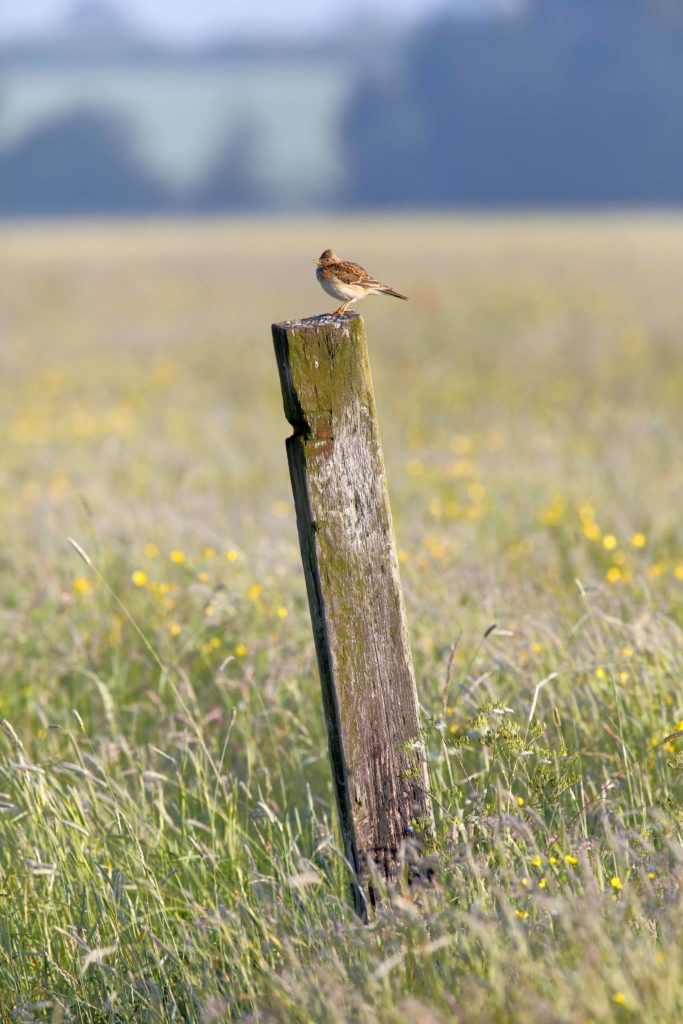
There is a sign next to the footpath that defines the Lammas Meadow as an ancient pasture which has been managed in the same way at least since 1762. The first cut of hay was historically taken after the 15th June and from the 1st August (Lammas Day) the meadow then grazed by cattle. The meadow is a Site of Special Scientific Interest for its varied wildflowers, is free of pesticides, and is a haven for ground-nesting birds such as skylarks and meadow pipits.
There is a farm track that cuts across the meadow providing access to an adjoining field. In May and early June walking along this track flushes skylarks into the air like mayflies along a riverbank. The meadow also supports large numbers of meadow pipits, a similar bird in colouration to a skylark but without the crest and a bit smaller, robin-sized as opposed to the size of a starling.
On still days the skylarks often sing from the ground, hidden away amongst the grasses and wildflowers. Parallel to the farm track is the remnants of a fence. If the wind gets up the skylarks prefer to sing from the top of the fence posts; this enables their song to be carried further across the meadow. On some windy days in spring, skylarks can occupy all the fence posts.
Just before dawn, a single skylark starts to sing, which seems to wake others from their slumber, resulting in more and more skylarks joining the dawn chorus. Initially they don’t ascend, they sing hidden away in their overnight roosts. This is just the prelude to what will happen later.
Once the sun has chased the shadows from the meadow, first one skylark takes to the wing, then another and another until there are skylarks ascending across the whole meadow. This initial excitement dies down after about an hour or so, the ascents becoming much more sporadic as the day progresses. The displays can stop altogether if the weather becomes cold and damp or during the mid-day sun on particularly hot days.
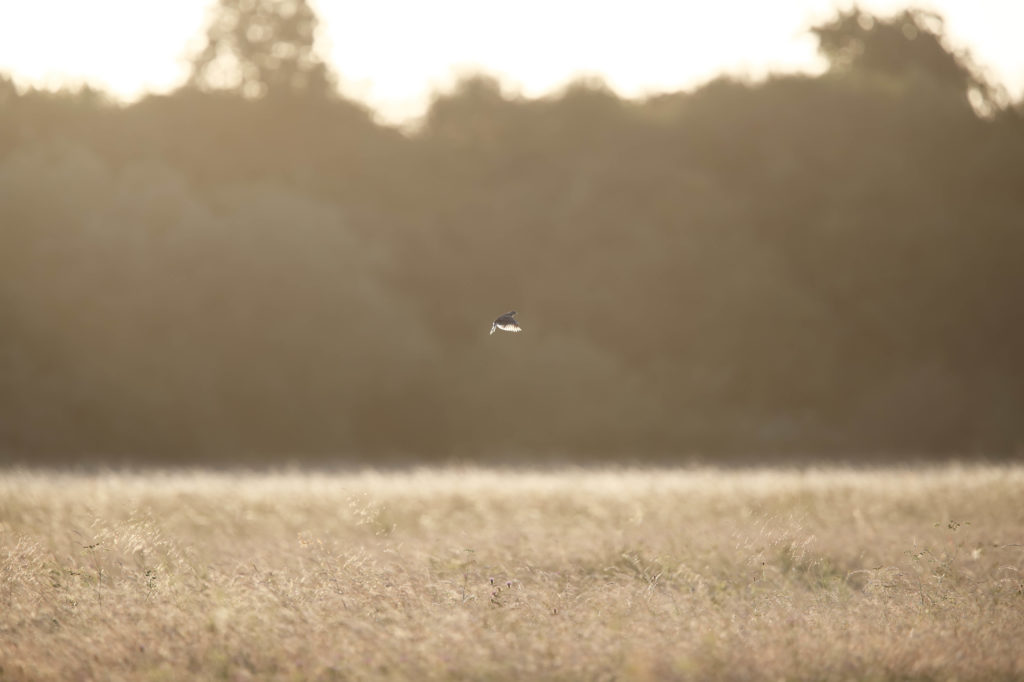
It’s strange that even as the skylarks ascend higher and higher their song doesn’t seem to diminish in volume. Merely a speck in the distance, they drift high above like gossamer, yet their song can be heard clearly.
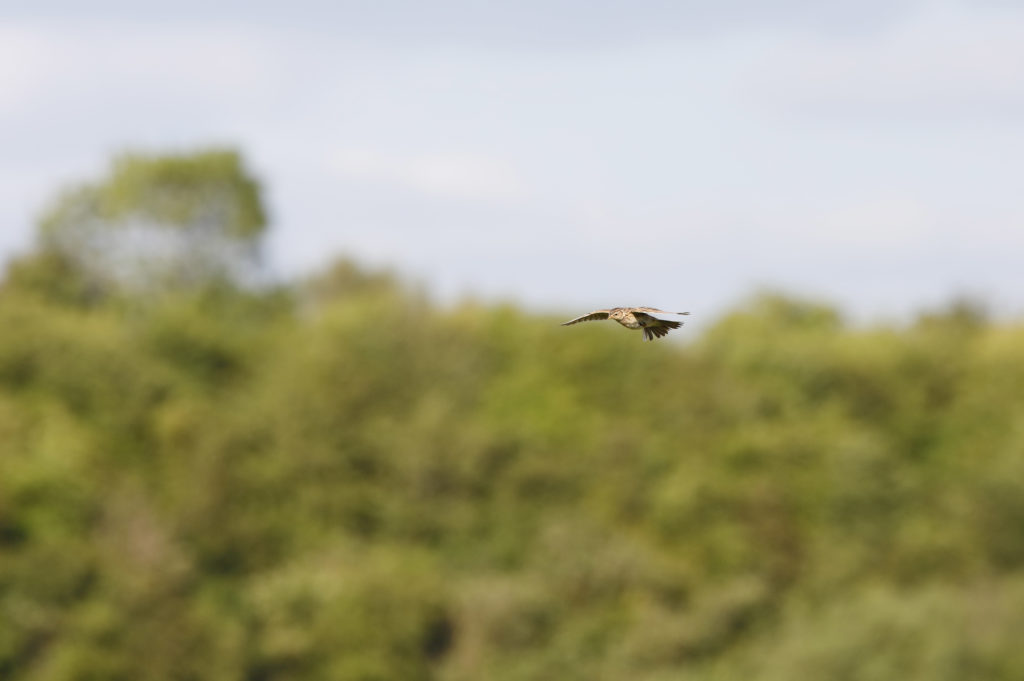
There are so many skylarks in the meadow that as they parachute earthwards at the end of a display, it is inevitable that they drift over each other’s nests. The natural instinct to defend their patch of meadow during the breeding season kicks in and the descending bird flushes skylarks into the air that give chase across the meadow until it finally manages to locate its own nest.
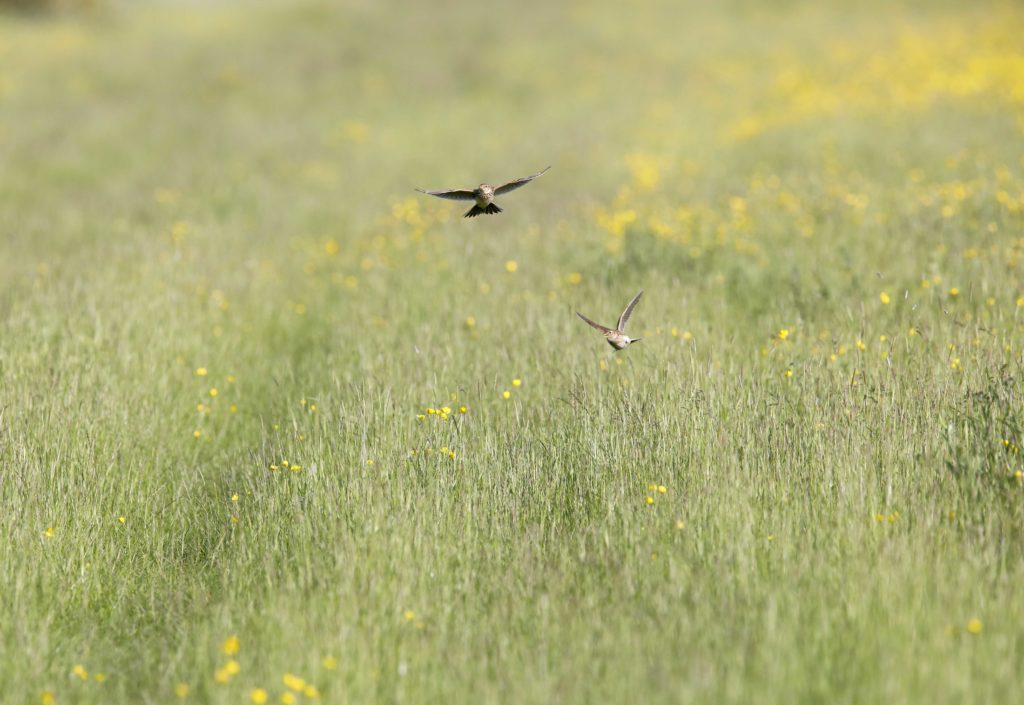
There are a lot of meadow pipits also nesting in the site, cousins of the skylark; they must have lived together in the meadow for a long time, as they seem to mimic the skylark’s behaviour. When the skylarks start to sing at dawn it encourages the meadow pipits to join in. They also ascend whilst singing but then, as if suddenly realising they are not skylarks, they abandon their song and dive for cover.
Meadow pipits will also sit and sing from the fence posts but are often chased away by their bigger cousins.
In May there is a eruption of buttercups across the meadow followed, as spring progresses, by more exotic wildflowers: Great Burnet, Saxifrage, Yellow Rattle and Common Bird’s-foot trefoil.
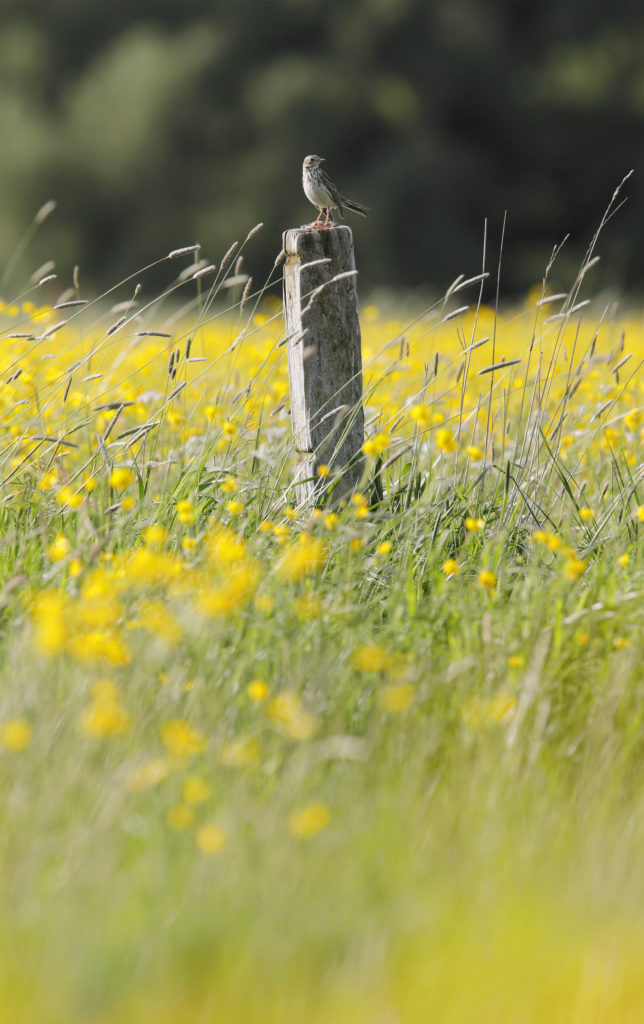
A female kestrel gives chase to a skylark, but the lark jinxes left then right, easily avoiding her outstretched talons. It’s not long before the raptor gives up and resumes her position on a hawthorn bordering the meadow.
The meadow supports substantial numbers of meadow brown butterflies and banded demoiselle damselflies, which form the staple food for the growing skylark chicks.
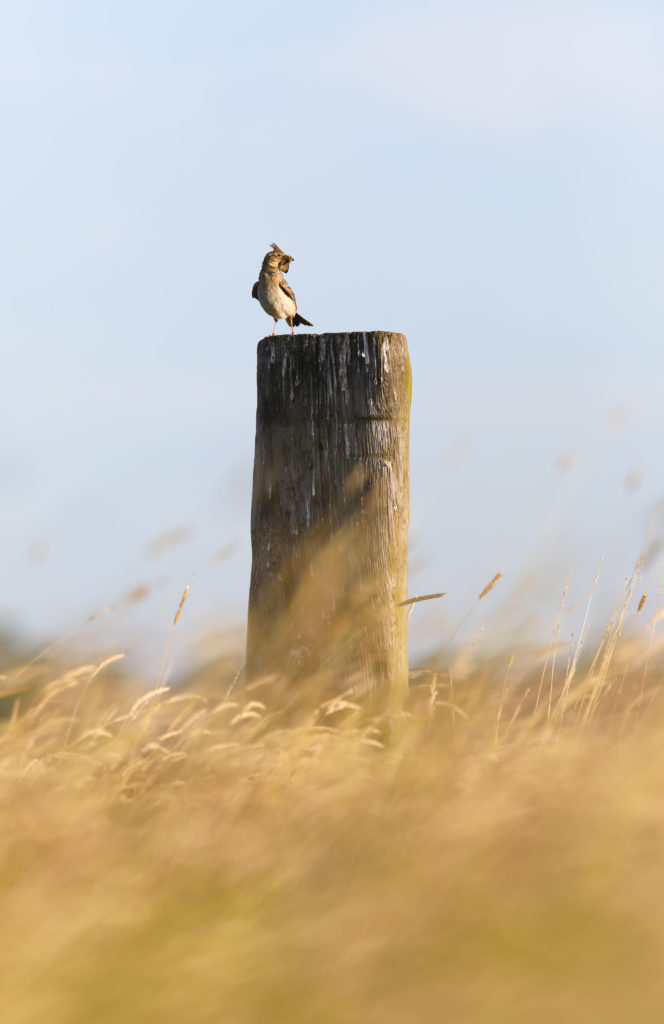
As spring rolls into summer the bird biomass increases in the meadow as more and more chicks fledge. And then one morning the meadow has been cut for hay, and the magic is over again for another year.